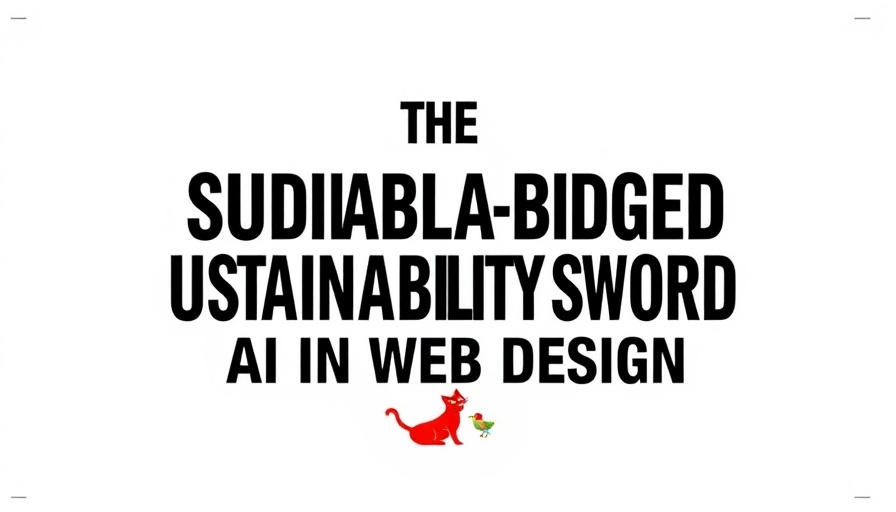
The Sustainability Paradox of AI in Web Design
As industries across the globe seek to innovate while adhering to sustainable practices, the field of web design is undergoing a significant transformation driven by artificial intelligence (AI). However, while AI brings remarkable efficiencies and potential sustainability benefits to this sector, it presents a paradox that designers must navigate carefully.
Empowering Design Teams With Efficiency
AI tools are revolutionizing how web designers and developers approach their work. By automating labor-intensive tasks such as layout generation, image optimization, and code refactoring, these technologies significantly enhance productivity. According to recent studies, developers utilizing AI-assisted tools can accomplish tasks up to twice as fast compared to traditional methods.
This newfound speed does not only streamline project timelines but may also signal a reduction in overall energy consumption during the development process. By minimizing the time spent on projects, one could argue that the carbon footprint of web design projects could, theoretically, become lower. However, this concern is nuanced by the heavy energy demands associated with powering AI algorithms and infrastructure.
AI’s Environmental Toll: A Double-Edged Sword
While the advantages of improved efficiency appear motivating, the environmental implications of AI must not be overlooked. The energy required to operate complex AI tools continues to grow alongside their use, prompting a critical evaluation of whether the efficiencies gained truly offset the environmental costs. Each project that utilizes AI must balance the speed of development against its carbon footprint.
For many businesses and designers, confronting this issue means assessing the types of AI tools invoked and recognizing those that contribute optimally to both efficiency and sustainability. As designers become more aware of AI’s ecological impact, there's a growing demand for solutions that not only expedite processes but also utilize energy more conservatively.
Pioneering Sustainable Practices Through AI
On a positive note, AI's robust capability to analyze code and identify inefficiencies presents profound opportunities for web designers. By detecting unused code and optimizing file sizes, AI can assist in producing sites that require less data to function efficiently. By leveraging advanced technology like Generative Adversarial Networks (GANs), designers can optimize media without sacrificing quality, ultimately reducing the energy required for media transfer.
Innovations such as AI-utilized caching strategies have proven to enhance user experience while simultaneously reducing server load and associated energy costs. This transformation holds value not only for the end-users but also for the environmental footprint of digital services by condensing energy consumption.
Conclusion: Navigating the Future of Web Design
A delicate balance lies ahead for web designers and stakeholders as they harness AI. The emergence of technologies capable of elevating design and functionality must adhere to a commitment to sustainability. As the digital landscape evolves, now is the time to prioritize tools and practices that deliver on both efficiency and environmental responsibility.
Designers need to stay informed about the dual nature of AI and actively seek innovative ways to mitigate its ecological footprint while embracing its benefits. By doing so, they not only contribute to a more sustainable digital environment but also inspire others within their profession to follow suit.
 Add Row
Add Row  Add
Add 




Write A Comment